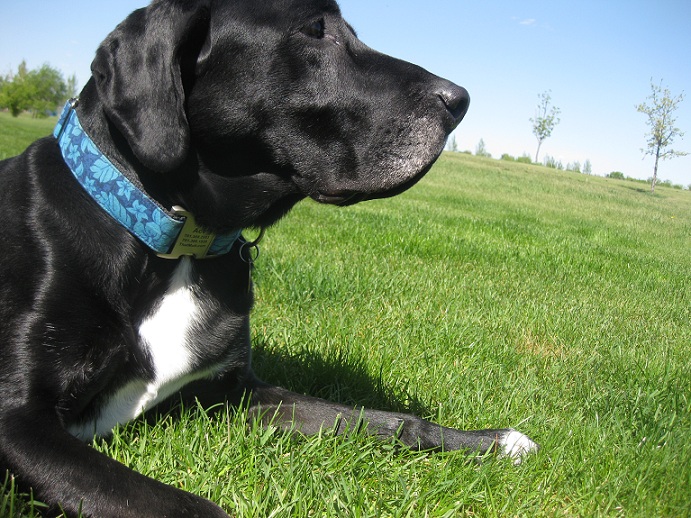Which dog training method is best?
There is no dog training method that will work for every dog/owner pair.
Every dog is different. Every owner is different. Every situation is different.
The best dog trainers recognize that.
I don’t like when I hear someone say something like “You should never put a shock collar on a dog.”
Really? Never?
Or how about “You should always use positive reinforcement.” Or, “You should always kennel train a dog.”
Always?
I don’t necessarily like shock collars, but they work great on certain dogs.
My mutt Ace wears a shock collar at my parents’ house in exchange for full freedom on their property. The collar keeps him safely in their yard and off the road. For other dogs, a shock collar will prevent unwanted barking so they get to be outside or in public more often. Not a bad tradeoff.
And as far as positive reinforcement goes, do you know how many times I’ve gotten up close to my dog and firmly said, “Now that’s enough of that!”
Probably 100 times. It gets my point across.
And what about kennel training? I plan to kennel train every single dog I ever own, but does that mean everyone should do the same? Of course not.
What if the dog is terrified of confinement? What if the dog spent five years crated at a puppy mill? What if the dog can be left alone in a bedroom without causing trouble?
Each situation is unique, as is each dog and each owner.
If you are thinking about getting a dog or if you have recently adopted a dog, I understand how training that dog can be very overwhelming. Everyone you know will be giving you advice about what to do and what not to do.
Rub the pup’s nose in her pee when she has an accident, one person might say.
Put out puppy pads or newspapers, someone else might say.
Personally, I suggest a common sense approach. Take the dog outside to the same spot – often – and reward her for peeing outside. Put her in a crate when you can’t supervise in order to prevent accidents.
When I train my own dog, I do not worry about labels like “positive reinforcement” or “dominance theory.”
I am almost always using a combination of rewards and consequences.
If Ace does something I like – maybe lying quietly while the neighbor dog barks – I tell him what a good boy he is. He might even get a treat or a back scratch.
If he barks at the neighbor dog, I will tell him “No!” while making direct eye contact. Usually he quiets down after that. If not, he goes in the house and temporarily loses the privilege of being outside with us. (Worst punishment ever!)
A reward can be as simple as a smile or warm eye contact.
A consequence could be taking a toy away.
I want to be a strong leader to my dog, but that doesn’t mean I should be aggressive or overbearing. It means my dog can look to me for comfort and direction without being too dependent.
Training should always be fun and based on love.
I want to be fun and positive, but that doesn’t mean I have to throw a party for Ace every time he obeys basic commands. Doing so would get my dog way too riled up. A simple smile or a “That’s right, boy” goes a long way.
Am I perfect? Far from it.
I’m getting there.


Tifanie
Wednesday 8th of April 2015
I'm really glad I found this article. I'm in veterinary school and have studied animal behavior for longer. I'm a HUGE proponent for positive reinforcement and BAT training as it is something I've worked in and witnessed the results. Positive reinforcement worked amazingly on my sensitive greyhound. But I've recently acquired a wild and young husky mix who has me at wits end. I've been struggling with crate training (he absolutely hates it) and obedience (if there's no treat pouch he's out) and struggling more with realizing a stronger, more dominance based method may work more effectively (he listens best to my "mom" voice). Even as science tells us that wolves and dogs really only "pack" for survival and hunting or for social interaction and the idea of an "alpha" is proving more myth than science, a strong yet positive leader may be just what this specific dog needs from me. Especially since he is a working breed who is really looking for a job and a boss ;)
Clay West
Thursday 19th of September 2013
Hello thank you for posting this ive had the same question for awhile now and all the comments have really been helpful. Thanks, Clay
Lindsay
Wednesday 8th of August 2012
Great, thanks Amanda!
amanda fortenberry
Tuesday 7th of August 2012
This is very true. Every dog is different and you can't use the same method for every dog you train. one dog may train real easy and you won't have to work very hard. Your other dog though may need different motivation. It's all about trial and error. The important thing is trust and sticking to a method that works for your dog. My blog also has some information that might help.
Liz
Thursday 26th of July 2012
My dogs all responded to different training methods, but they all did well with the positive reinforcement method, and seemed to focus if we had a treat reward for them at the end of their task. As long as they knew they would get a piece of a natural balance dog food roll as a treat, they performed the command, and learned very quickly.
Lindsay
Wednesday 8th of August 2012
That's awesome!